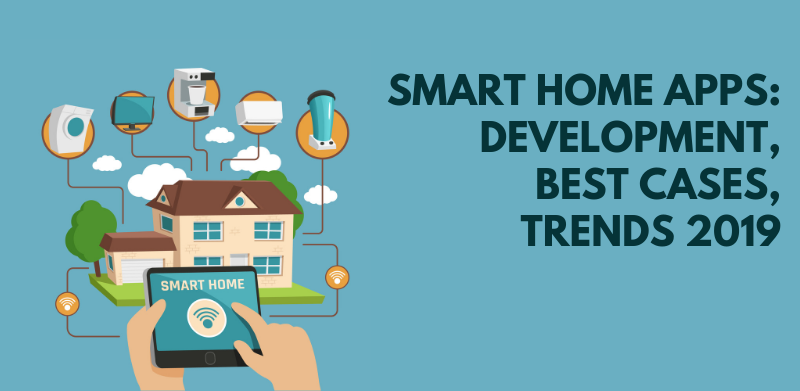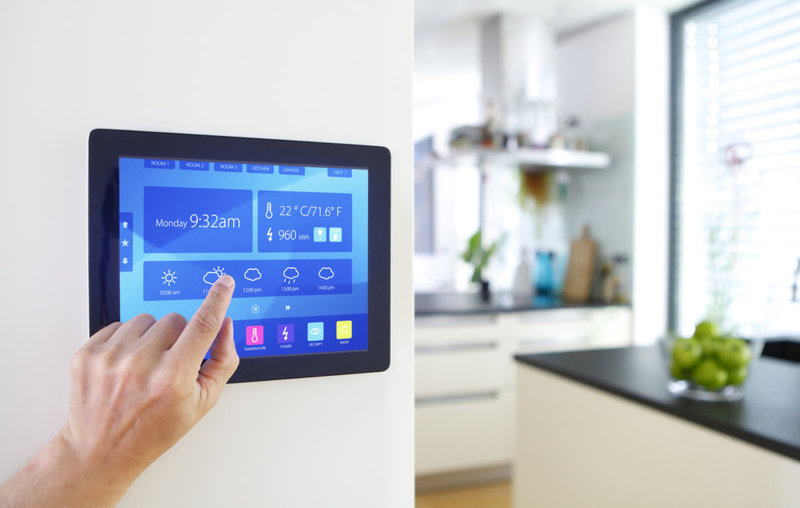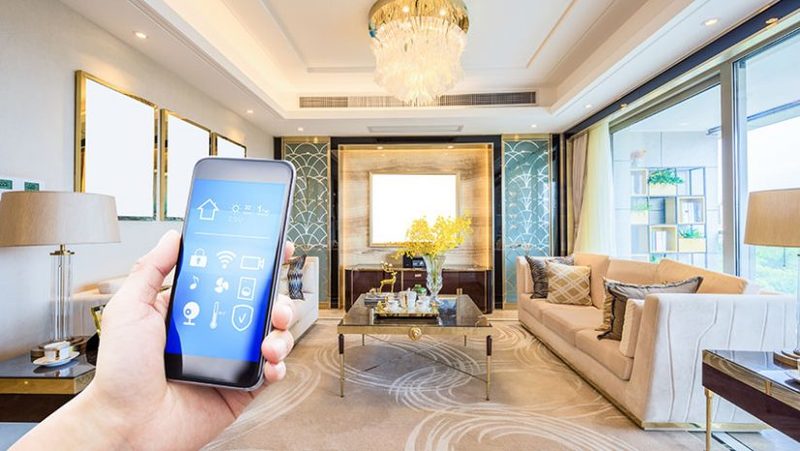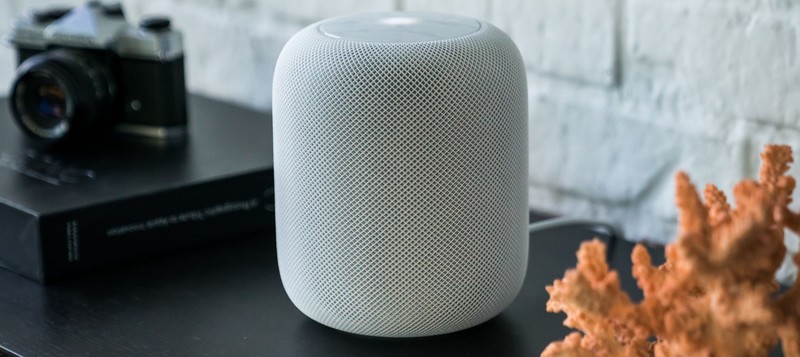Did you know that according to market expert predictions, the global value of smart homes is expected to pass the $53 billion mark by 2022? It is an especially demanded technology among the North American population.

Right now is the best time to build something in this niche yourself. Let’s review this topic and discover some specifics of developing your own smart home software.
How do Intelligent Houses Work?
The smart home structure implies a pretty simple implementation process: you usually get a full package of sensors that are to be connected via IoT capabilities to a centralized managing element, e.g., smartphone. Most such systems include features like:
- lights and voltage level control;
- climate control (heating, ventilation, and AC);
- security management (video surveillance, technical and fire security, alarm);
- interaction with actuators (gates, shutters, and other home automation control);
- entertainment system management (video, audio);
- plant watering systems control.
The most in-demand capacities are the light and voltage management ones. You can control lighting all over your house simultaneously and control its volume.
The climate control allows you to adjust the temperature and adapt to the most fitting ‘inner weather’ conditions.
The smart security scans all the movements in enters and exits that can be used to invade your abode and automatically sets off an alarm in the case of an emergency. However, it requires programmable cameras on top of movement sensors to be installed all over the place.
Everything’s simple with entertainment systems - you get to put on video content and music at will, through remote control.
The Most Renowned Smart Home Providers
There are several companies which can be considered leading in the niche: Philips with its smart lighting system; Bosch with a wide range of controllers and sensors for building convenient plug-and-play systems; Amazon with its AI-powered virtual assistant Alexa that can help you control all the rest of your smart house infrastructure with voice commands; smart speaker Apple HomePod; and sensors and smart speakers from Google Home.
Issues You Can Come Across When Using Smart Home
As much such systems are easy to install and configure, a vast majority of customers employ initial smart home organization services. Yet, they can only afford to employ local service providers in this niche. There is also no single, standardized platform, which makes every other solution unique in its way.

What all that could mean to you as a potential software supplier? Simply that you have all the reasons to launch your business concept on a local level.
Specifics of Developing Smart Home Apps
Choosing a platform
You may already know that every other smart home solution is based on the Internet of Things technology, which allows managing numerous devices interconnected within a centralized network. Formally, practically any tool connected to WiFi (e.g., your smartphone) can be considered an IoT element. However, sensors that come in a package with most systems are of very primitive construction and, some of them, don’t even have displays (only light diodes).
That is exactly why specialized technologies (like ZigBee, Z-Wave or Bluetooth) and data transmitting protocols (e.g., HTTP, MQTT, AMQP, CoAP, and others) must be employed in order to program these simple tools based on a proper algorithm. In turn, access to these protocols and technologies is achieved through special ready-made IoT platforms that are based on cloud services - Microsoft Azure IoT Suite, Amazon Web Services, IBM Watson, Oracle IoT, KAA IoT, Google Cloud IoT, etc. IDE (Integrated Development Environment) can also be used instead. There are certain pros and cons in both cases.
On one hand, it is much simpler and faster to use a working product out of the box (just choose one from the set we mentioned above): all the questions regarding software security, protection from cyber attacks, and initial configurations will be solved for you. These platforms support IoT devices using any protocols, facilitate the setup process and make the IoT ecosystem actually 'smart'. Also, the ready-made solutions offer a standard user interface. Why waste time doing something that’s already well done?
On the other hand, a custom IDE (for instance, a solution based on Python like IDLE) will help you create smart home apps from scratch, allowing you to be utterly flexible in any implementations. Keep in mind, however, that it is quite difficult to combine software parts built based on the IDE with components of readymade IoT platform-based solutions.
All in all, it is better to use IDE for the development of the narrow-focus software, features of which are impossible to implement through AWS or IBM Watson. In all the rest of cases, you can stop your choice on an out-of-the-box solution in order to save time, money and strengths.
But the main thing to consider before making a decision is the monetization. Using out-of-the-box IoT solution you have to pay a certain monthly fee, so your earnings will be less than it could be with a custom IDE. Making your own IoT system requires more investment, but ultimately you will be able to cover the development cost much faster.
Major Smart Home App Features
And now it is time to discuss some of the main features your future application for a smart home must have by default. The following is, basically, a full set of functionality a standard MVP should feature. Although, if you are striving for something more, you will need to also involve some advanced solutions that are trendy in the current IT.

- Registration and Access. This feature guarantees that access to sensors’ configurations is only granted for trusted entities (for example, homeowners). Ideally, an app should have several levels of access: this will help you avoid children or stranger house workers intruding in the system.
- Guide. This part of the software should explain in detail how to properly install, connect, and employ one’s smart system devices. An awesome additional functionality that will make everything utterly descriptive is the augmented reality. Involve it in your solution so that users are able to use their smartphone camera to see useful virtual info over the real environments.
- Devices and sensors. Now, this concerns the hardware part of your system that can go alongside the software. There can be a separate controller (or it can be a smartphone application, which is, usually, a better way to go around these things) as well as all sorts of sensors (for climate, light, actuator mechanisms, and surveillance). All that can be easily found in retail.
- Basic centralized control opportunities. Users should get to use some default modes that wouldn’t require them to adjust each sensor separately. Such configurations are, usually, set up from the get-go, right after the system installation (for utter convenience, there can be modes by rooms).
- Push Notifications. Immediate smartphone Push Notifications will allow smart home residents to always be up to date as to what is going on in their abode, even when they are miles away. This is an especially relevant feature when it comes to intelligent security systems.
The Most Ambitious Smart Home App Trends
As we’ve already mentioned, all the features enumerated above are usually included in a minimum viable product. But if you want to go further and provide some advanced capacities in your project to make it truly farsighted and competitive in the market, you should go for at least one of the following trendy progressive pieces of tech:
- artificial intelligence. Surely, you can connect light switchers and smart sockets to a cheap Arduino circuit and have your finished smart home at that. But artificial intelligence can do wonders and make all the management and controls utterly simple, intuitive, and flexible in use for your end users.
- voice control. Voice search became a new milestone in the development of the AI concept. In particular, as you may know, practically all popular smart home solutions available right now on the market tend to support the voice control option. The more exact your system in recognizing voice commands, the better (e.g., many Siri users are unsatisfied with the fact that they have to repeat many commands over and over before they're correctly recognized by the virtual assistant).
- save energy. Energy efficiency is an implicit key to the success of your future project, especially, in the aspect of all events related to fighting problematic global warming causes. If you can offer your users an electricity-saving option (or at least employ energy efficient LED lights in your hardware), most of the audience will receive such a feature with great enthusiasm.
Successful Smart Home App Cases
We have already mentioned some undisputable leaders in this software development niche. Now, let’s consider in detail why these products gained such a popularity in the long run.
- Alexa, Amazon Echo & sensors from Amazon. These are among the first renowned software solution based on AI and voice recognition intended for managing a smart home. Notice that during recent years Amazon has been integrating Alexa both with its authentic devices (Echo, Fire HD 10 tablet, etc.) and in third-party products (for instance, Ford started integrating the voice assistant from Amazon into their new car models). With the help of Alexa, you can control smart switches (like Ecobee Smart Light Switch), fridge devices like Invoxia Triby, as well as a wide range of devices from such lines as Samsung SmartThings, Insteon, Alarm.com Vivink, Nexia, Wink, and others.
- Apple HomePod. Apple HomePod allows managing house systems via simple Siri requests. The speaker works both as a proprietary device and via a separately installed smartphone app. You can use voice commands to manage all sorts of sensors (this is great in the case of devices like Hue smart lamps that don’t have built-in switches).

- Google Home Smart Devices and Controllers. Another ‘smart speaker’ that will make interaction with your smart sensors simpler. Particularly, it helps greatly to manage TVs (that are compatible with Chromecast), audio systems, smart sockets and lamps, doorbells, video surveillance devices, and even coffee makers! To connect and configure Google Home, one should use the application of the same name which can be easily found on Google Play and App Store.
Smart Home App Development: Summary
As you can see, leaders in the niche of smart homes are, mostly, huge IT market tycoons. Their products are multipurpose, which makes it useless to replace them with other solutions for many customers out there. Along with that, however, there is a certain lack of narrow-focused solutions on the current market. That gives you all the reason to try and conquer the niche with an original project of your own. Turn to Applikey Solutions and we will build you a technological solution that will be highly competitive, utterly useful, and original for users all around the world.







